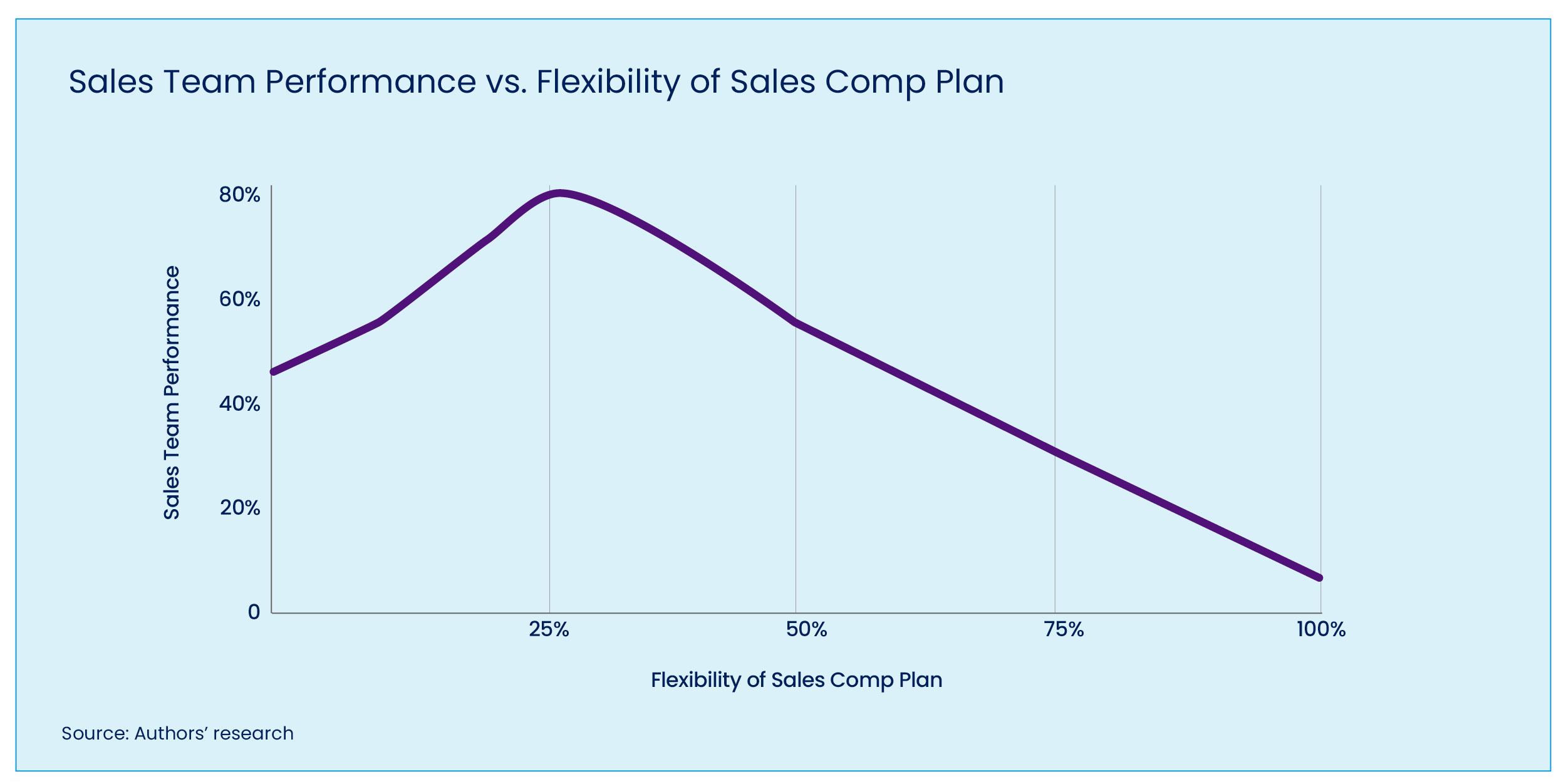- The power of self-selected incentives. When salespeople are able to self-select incentives, it leads to a boost in motivation and an increase in performance.
- Balancing consistency and flexibility. There are benefits to having both consistency and flexibility in sales compensation plans, and businesses will need to find a balance between the two.
- Have a framework. To strike the right balance, employers should consider implementing a framework that includes key components such as baseline consistency, frequency of changes and communication strategy.
When it comes to sales compensation, the days of “set it and forget it” for a year have come to an end. While consistency in strategy is undoubtedly crucial for long-term success, the ability to adapt and provide flexibility in compensation plans is emerging as a powerful catalyst for boosting motivation and driving results.
Webinar: Salary Budget Planning Playbook: Data, Strategy and Insights for the Year Ahead
One way to provide such flexibility is through the use of self-selected incentives. Drawing from goal-setting theory, this incentive framework allows sales employees to choose personalized goal-reward combinations based on their past performance.
A 2018 study by Raghuram Bommaraju and Sebastian Hohenberg found that using self-selected sales incentives yielded a substantial increase in sales performance compared to traditional quota systems. Moreover, the effects persisted even after the discontinuation of the self-selected incentive scheme.
Why was this approach so successful? As highlighted in the study, self-selected incentives empower sales reps to align their goals with individual performance, fostering a sense of ownership and control. This autonomy not only boosts motivation but also leads to a notable increase in performance, particularly for those with high variation in past performance and those at lower performance levels.
A Balancing Act
The importance of balancing consistency with flexibility cannot be overstated. On the one hand, a clear and consistent compensation plan provides stability, fostering a positive and motivated sales mindset. On the other hand, adapting to market dynamics and business strategy shifts is essential for staying competitive in dynamic environments. So, the challenge lies in striking the right balance between consistency and flexibility.

Indeed, the Laffer Curve, traditionally used to optimize tax rates, finds a compelling application in sales compensation regarding the dangers of excessive flexibility, suggesting that there exists an optimal point where constant changes start to yield diminishing returns. In sales compensation plans, the optimal flexibility point is where too much change begins to erode the psychological benefits derived from a consistent structure. Beyond this point, constant adjustments may lead to confusion, potentially demotivating the sales team and hindering their focus on revenue generation.
Establishing a Framework
To strike the right balance, consider implementing a framework that includes the following components:
1. Baseline consistency. Establish a foundational, consistent sales compensation plan to provide stability and a reliable understanding of the correlation between efforts and rewards. Companies that change plans year after year have difficulty evaluating success over long periods of time. Year-over-year comparisons provide little value, and the goalpost for success keeps moving.
2. Market and strategy analysis. Regularly assess market conditions and align compensation plans with evolving company strategies for adaptability. Using third-party services to assist in benchmarking can keep your team abreast of what is happening in the marketplace. Pivoting too slowly or too quickly can be a recipe for disaster.
3. Frequency of changes. Evaluate the frequency of changes carefully, avoiding excessive volatility that may lead to confusion and demotivation. University of California, Berkeley professor Morten Hansen coined the phrase “Do Less, Then Obsess.” Do not overdo changes; rather, focus on the one or two key areas in which you can bring about positive change quickly and easily.
4. Communication strategy. Develop a robust communication strategy for any changes to manage expectations, reduce potential negative psychological impacts and ensure alignment with company goals. All teams — from enablement and training to sales leaders, individual contributors and even recruiters — need to be in the know. Alignment on strategy is the single biggest factor for success.
5. Monitoring and feedback loop. Implement a continuous monitoring system and feedback loops to assess the impact of changes. Common feedback loops include the Plan-Do-Check-Act (PDCA) cycle, Six Sigma's DMAIC (Define, Measure, Analyze, Improve, Control) and the Agile retrospective loop. The OODA (Observe, Orient, Decide, Act) loop, developed for military strategy and a favorite of ours for its simplicity, is also valuable in business contexts. These iterative processes enable businesses to make quick adjustments and maintain a balance that maximizes the sales team’s performance.
One Company’s Experience
Faced with the challenge of providing its sales team with both greater autonomy and a break from conventional sales approaches, a company we have worked with conceived a program that empowered sales reps to shape their narratives through the AdventureChoice incentive. Each decision made by the representatives — from timing their sales efforts to choosing the method of approach — carried varying payouts, reflecting the direct impact on performance.
Rooted in the strategic framework laid out in this article, the approach turned up results that surpassed expectations. Unlike previous incentive programs, where only 20% to 25% of representatives were actively involved, the new approach saw workforce engagement of more than 80%. Moreover, 60% of representatives either met or exceeded their committed objectives, double the number who did so under the typical target attainment dynamic. Lastly, this heightened enthusiasm and renewed commitment to surpassing objectives contributed to a nearly 2% increase in the top line for the period.
The future of sales compensation lies in successfully navigating the delicate balance between consistency and flexibility. By applying the principles of the Laffer Curve and adopting a strategic framework for change, businesses can ensure a motivated and high-performing sales team aligned with the company's strategic objectives.
Editor’s Note: Additional Content
For more information and resources related to this article see the pages below, which offer quick access to all WorldatWork content on these topics:







